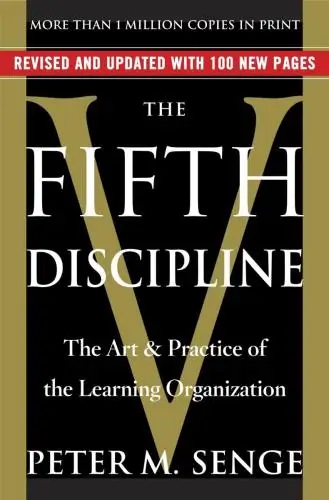
The Fifth Discipline
The Art & Practice of The Learning Organization
What's it about?
The Fifth Discipline is a exploration of how organizations can thrive in a complex world. It introduces the concept of the learning organization, where adaptability and growth are cultivated through five key disciplines: personal mastery, mental models, shared vision, team learning, and systems thinking. Senge argues that mastering these disciplines can lead to sustained success and innovation in any organization. This book is a must-read for leaders and individuals seeking to understand the dynamics of change and growth in the modern workplace.
About the Author
Peter M. Senge, a systems thinking pioneer, masterfully bridges the gap between corporate complexities and the personal mastery of individuals. His seminal work, "The Fifth Discipline," is a beacon for organizations aspiring to learn and evolve. Senge's writing, rich with insights on leadership and change, advocates for the cultivation of learning organizations where innovation and adaptability are not just encouraged but embedded in the culture. His unique perspective on systemic change and sustainable growth has positioned him as a luminary in both academic and corporate circles.
10 Key Ideas of The Fifth Discipline
Building a Shared Vision to Foster Commitment and Enthusiasm
Creating a shared vision involves developing a common sense of purpose that binds the organization together, transcending personal agendas.
This vision acts as a guiding star, providing direction and motivation.
It encourages individuals to learn, not because they are told to, but because they want to contribute to the realization of this shared dream.
The process of building this vision collectively ensures that it resonates with everyone, fostering a deep commitment and enthusiasm towards achieving the organizational goals.
This collective vision serves as a powerful motivator, aligning individual aspirations with the organization's objectives, thereby enhancing productivity and innovation.
Learn DeeperStart with Why: Before diving into creating a shared vision, ensure everyone understands the 'why' behind what you're doing. This helps in aligning personal motivations with the organizational goals.
Facilitate Open Dialogues: Organize regular meetings or workshops where team members can openly share their ideas, hopes, and concerns. This collaborative environment is crucial for co-creating a vision that everyone feels connected to.
Visualize the Future: Encourage team members to express their vision of the future in vivid detail. Use tools like vision boards or storytelling to make this future more tangible and inspiring.
Establish Common Values: Identify and articulate the core values that your organization stands for. These values should support the vision and guide behavior within the organization.
Create Short-term Goals Aligned with the Vision: Break down the long-term vision into achievable short-term goals. This makes the vision more accessible and provides clear direction for daily activities.
Celebrate Milestones: Recognize and celebrate when milestones towards the vision are achieved. This reinforces commitment to the vision and keeps enthusiasm high.
- Example
A tech startup begins its journey by hosting a series of workshops where every employee, from the CEO to the newest intern, shares their personal dreams and how these could shape the company's future. Together, they craft a vision statement that reflects a shared ambition to innovate while maintaining a commitment to sustainability.
- Example
A non-profit organization focused on community development initiates a project where community members and staff come together to envision the future of their neighborhood. They use storytelling to imagine a thriving, connected community and then outline practical steps and projects that align with this vision, such as creating green spaces and improving local education.
Mastering Personal Mastery for Continuous Self-Improvement
Personal mastery is the discipline of continually clarifying and deepening our personal vision, focusing our energies, developing patience, and seeing reality objectively.
It involves a commitment to truth and ongoing self-improvement.
By fostering personal mastery, individuals are encouraged to be proactive about their growth, leading to higher levels of confidence and competence.
This self-driven motivation contributes to the overall learning environment of the organization, as individuals who are committed to their own growth are more likely to contribute positively to team dynamics and innovation.
Personal mastery enables individuals to align their personal goals with the organization's, leading to a more cohesive and productive work environment.
Learn DeeperSet Clear Personal Goals: Start by defining what you want to achieve in both your personal and professional life. Make these goals specific, measurable, achievable, relevant, and time-bound (SMART).
Practice Reflective Journaling: Dedicate time each day or week to reflect on your experiences, the decisions you made, and their outcomes. This practice can help you see reality more objectively and understand your role in different situations.
Develop a Learning Plan: Identify the skills and knowledge areas you need to develop to achieve your personal goals. Create a structured plan to acquire these, whether through formal education, self-study, or practical experience.
Cultivate Patience and Persistence: Understand that personal mastery is a journey, not a destination. Celebrate small victories along the way and be patient with yourself as you work towards your larger goals.
Seek Feedback and Mentorship: Regularly seek constructive feedback from peers, mentors, or coaches. This can provide you with external perspectives on your progress and areas for improvement.
Align Personal Goals with Organizational Objectives: Look for ways to align your personal development goals with the needs and objectives of your organization. This alignment can increase your value to the organization and enhance your job satisfaction.
- Example
A marketing professional sets a personal goal to improve their public speaking skills to better represent their company at industry conferences. They join a local Toastmasters club to practice speaking regularly, seek feedback, and gradually take on larger speaking engagements.
- Example
An IT specialist aims to transition into a cybersecurity role within their company. They identify the certifications needed, set a timeline for study and examination, and engage in online forums and communities to deepen their understanding of the field. They also volunteer for security-related projects at work to gain practical experience.
Harnessing Team Learning to Amplify Collective Intelligence
Team learning is the process of aligning and developing the capacities of a team to create the results its members truly desire.
It builds on the collective intelligence of the team, rather than solely on the skills of individual members.
Through dialogue and skillful discussion, teams can learn to think together – effectively pooling their insights and reaching conclusions that individual members could not have reached alone.
This collaborative approach not only enhances problem-solving and creativity but also fosters a culture of openness and trust.
By learning together, teams can adapt more quickly to changes, innovate, and achieve superior results, making the organization more competitive and resilient.
Learn DeeperFoster Open Dialogue: Encourage every team member to share their thoughts and ideas without fear of judgment. This can be done by setting clear ground rules for respectful communication and actively listening to each other.
Practice Active Listening: Make a conscious effort to understand not just what your teammates are saying, but also the meaning behind their words. This involves asking clarifying questions and summarizing what you've heard to ensure accurate understanding.
Conduct Regular Reflection Sessions: Set aside time for the team to reflect on recent successes and challenges. Use these sessions to discuss what was learned and how it can be applied moving forward.
Implement Skillful Discussion Techniques: Learn and apply techniques such as 'The Thinking Environment' by Nancy Kline or 'Dialogue Mapping' to help structure conversations in a way that brings out the collective intelligence of the group.
Create a Shared Vision: Work together to develop a clear, shared vision of what the team wants to achieve. This aligns efforts and fosters a sense of purpose and commitment among team members.
- Example
A software development team holds a weekly 'retrospective' meeting where they discuss what went well, what didn't, and how they can improve. They use this time to pool insights from different team members, leading to innovative solutions for ongoing challenges.
- Example
A marketing team facing a decline in campaign effectiveness decides to hold a series of open dialogues. In these sessions, each member is encouraged to share their perspective on the issue. Through skillful discussion and active listening, they uncover overlooked data points and collectively devise a more targeted approach, resulting in improved campaign performance.
Implementing Systems Thinking to Understand Complexity
Systems thinking is a conceptual framework that allows us to see patterns and interrelationships in complex systems, rather than viewing them as discrete parts.
It helps in understanding how actions can reinforce or counteract (balance) each other and how change can lead to unintended consequences.
By adopting systems thinking, organizations can better diagnose problems, anticipate the long-term impacts of decisions, and design more sustainable solutions.
This holistic approach encourages looking beyond short-term gains to consider the long-term implications of actions, leading to more responsible and effective decision-making.
Systems thinking ultimately fosters resilience and adaptability in an ever-changing business environment.
Learn DeeperStart with a simple system map: Begin by identifying the key components of a situation or problem you're dealing with. Draw them out and connect them with arrows to indicate relationships (cause and effect, feedback loops, etc.). This visual representation can help you see the bigger picture and how elements interact.
Think in 'loops' rather than 'lines': Shift your mindset from linear cause-and-effect to cyclical patterns of influence. Look for feedback loops where one action influences another, which in turn affects the first action, either reinforcing it (positive feedback) or balancing it (negative feedback).
Question your assumptions: Regularly challenge what you believe to be true about how things work. Ask yourself, 'What if I'm wrong? How would that change the way these elements interact?' This can uncover hidden biases and lead to deeper understanding.
Practice reflection: After making decisions or taking actions, take time to reflect on the outcomes. Did things go as expected? Why or why not? What unintended consequences emerged? Reflection helps in learning from experience and improving future decision-making.
Engage others in systems thinking: Share your insights and maps with colleagues or friends. Discussing your perspectives can reveal blind spots and foster a collective understanding of complex systems. Collaboration enhances the ability to tackle complex problems effectively.
- Example
A business trying to increase sales might initially focus on aggressive marketing. However, using systems thinking, they might identify that improving customer service and product quality leads to higher customer satisfaction, which in turn leads to word-of-mouth referrals and ultimately increases sales. This approach recognizes the interconnectedness of customer satisfaction and sales, rather than viewing marketing in isolation.
- Example
An individual trying to improve personal health might start by focusing solely on exercise. Through systems thinking, they might see the importance of integrating other aspects such as diet, sleep, and stress management. Recognizing these interconnections can lead to a more balanced and effective approach to health, rather than seeing exercise as the sole solution.
Cultivating Mental Models to Open Minds and Foster Innovation
Mental models are deeply ingrained assumptions or generalizations that influence how we understand the world and take action.
Challenging and refining these mental models is crucial for learning and innovation.
By encouraging individuals to reflect upon, discuss, and scrutinize their mental models, organizations can foster an environment where new ideas are welcomed and creativity is nurtured.
This openness to questioning and changing one’s perspective leads to breakthrough innovations and solutions that would not be possible if everyone adhered strictly to their existing beliefs.
Cultivating an awareness of mental models promotes a culture of continuous learning and adaptation, which is essential for thriving in today’s dynamic business landscape.
Learn DeeperReflect on Your Assumptions Regularly: Set aside time each week to think about the assumptions you make in your daily life and work. Ask yourself why you hold these beliefs and how they might be limiting your perspective.
Encourage Open Dialogue: In meetings or team discussions, actively encourage everyone to share their mental models related to the topic at hand. This can be done by asking questions like 'What assumptions are we making here?' or 'How does our perspective shape our understanding of this issue?'
Seek Out Diverse Perspectives: Make a conscious effort to engage with people who have different backgrounds or viewpoints from your own. This could be as simple as reading articles from a variety of sources or initiating conversations with colleagues from different departments.
Experiment with Your Ideas: Don’t be afraid to test out new ideas based on revised mental models. Small-scale experiments can provide valuable insights and help you refine your understanding without significant risk.
- Example
A product development team regularly holds brainstorming sessions where each member is encouraged to challenge the prevailing assumptions about what customers want. This leads to the creation of a groundbreaking new product that addresses needs previously overlooked.
- Example
A manager notices that her team often assumes that projects will take longer than they actually do, leading to padded timelines and decreased productivity. She initiates a 'challenge the assumption' exercise for each project planning session, resulting in more accurate timelines and increased team efficiency.
Deeper knowledge. Personal growth. Unlocked.
Unlock this book's key ideas and 15M+ more. Learn with quick, impactful summaries.
Read Full SummarySign up and read for free!
The Fifth Discipline Summary: Common Questions
Experience Personalized Book Summaries, Today!
Discover a new way to gain knowledge, and save time.
Sign up for our 7-day trial now.
No Credit Card Needed

Similar Books

Emotional Intelligence at Work
Dalip Singh
Seeing the Big Picture
Kevin Cope
Leadership Is Concept Heavy
Dr. Enoch Antwi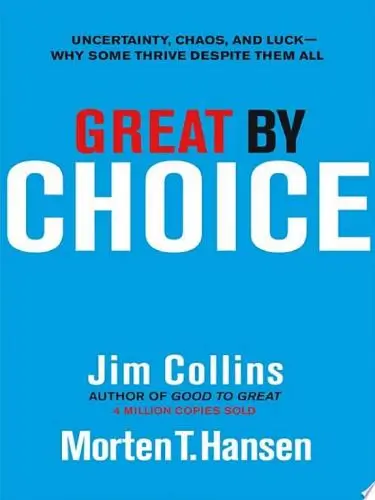
Great by Choice
Jim Collins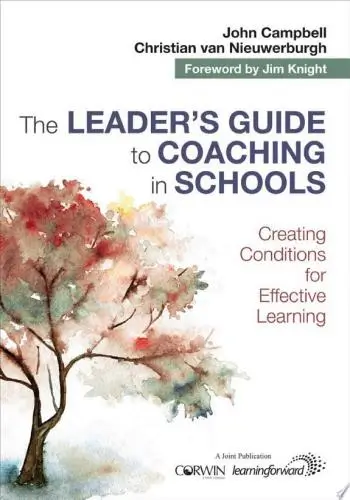
The Leader′s Guide to Coaching in Schools
John Campbell
Preparing School Leaders for the 21st Century
Stephan Gerhard Huber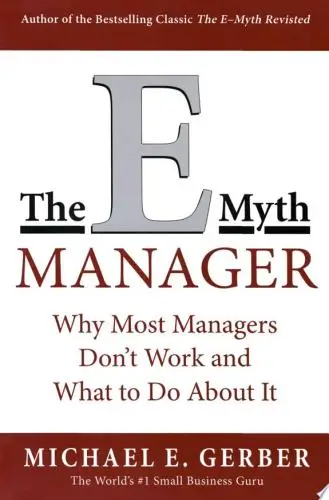
The E-Myth Manager
Michael E. Gerber
Leadership Is Language
L. David Marquet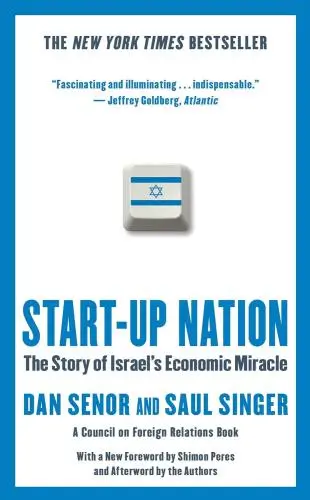
Start-up Nation
Dan Senor
The Founder's Dilemmas
Noam WassermanTrending Summaries

Peak
Anders Ericsson
Never Split the Difference
Chris Voss
Smart Brevity
Jim VandeHei
The Psychology of Money
Morgan Housel
The First 90 Days
Michael D. Watkins
Atomic Habits
James Clear
Thinking, Fast and Slow
Daniel Kahneman
The Body Keeps the Score
Bessel van der Kolk M.D.
The Power of Regret
Daniel H. Pink
The Compound Effect
Darren HardyNew Books

Job Interviews For Dummies®
Joyce Lain Kennedy
Job Interviews In A Week
Alison Straw
Handbook of Career Development
Gideon Arulmani
The Art of Spending Money
Morgan Housel
$100M Offers
Alex Hormozi
A Candle for Kiri
Edna Mae Holm
Principles of Marketing, Global Edition
Gary Armstrong
Serpent Rising: The Kundalini Compendium
Neven Paar
Feeling Is the Secret
Neville Goddard
